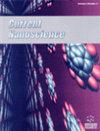A Concise Review on Magnetic Nanoparticles: Their Properties, Types, Synthetic Methods, and Current Trending Applications
IF 1.5
4区 材料科学
Q4 BIOTECHNOLOGY & APPLIED MICROBIOLOGY
引用次数: 0
Abstract
: In recent years, there has been significant research on developing magnetic nanoparticles (MNPs) with multifunctional characteristics. This review focuses on the properties and various types of MNPs, methods of their synthesis, and biomedical, clinical, and other applications. These syntheses of MNPs were achieved by various methods, like precipitation, thermal, pyrolysis, vapor deposition, and sonochemical. MNPs are nano-sized materials with diameters ranging from 1 to 100 nm. The MNPs have been used for various applications in biomedical, cancer theranostic, imaging, drug delivery, biosensing, environment, and agriculture. MNPs have been extensively researched for molecular diagnosis, treatment, and therapeutic outcome monitoring in a range of illnesses. They are perfect for biological applications, including cancer therapy, thrombolysis, and molecular imaging, because of their nanoscale size, surface area, and absence of side effects. In particular, MNPs can be used to conjugate chemotherapeutic medicines (or) target ligands/proteins, making them beneficial for drug delivery. However, up until that time, some ongoing issues and developments in MNPs include toxicity and biocompatibility, targeting accuracy, regulation and safety, clinical translation, hyperthermia therapy, immunomodulatory effects, multifunctionality, and nanoparticle aggregation.磁性纳米颗粒的性质、类型、合成方法及应用趋势综述
近年来,人们对开发具有多功能特性的磁性纳米颗粒(MNPs)进行了大量研究。本文综述了MNPs的性质和各种类型、合成方法、生物医学、临床和其他应用。这些MNPs的合成是通过各种方法实现的,如沉淀、热、热解、气相沉积和声化学。MNPs是直径在1到100纳米之间的纳米级材料。MNPs已被用于生物医学、癌症治疗、成像、药物输送、生物传感、环境和农业等领域的各种应用。MNPs已被广泛研究用于一系列疾病的分子诊断、治疗和治疗结果监测。由于其纳米级的尺寸、表面积和无副作用,它们非常适合生物应用,包括癌症治疗、溶栓和分子成像。特别是,MNPs可用于偶联化疗药物(或)靶配体/蛋白质,使其有利于药物递送。然而,在此之前,MNPs的一些持续的问题和发展包括毒性和生物相容性、靶向准确性、调节和安全性、临床翻译、热疗、免疫调节作用、多功能性和纳米颗粒聚集。
本文章由计算机程序翻译,如有差异,请以英文原文为准。
求助全文
约1分钟内获得全文
求助全文
来源期刊

Current Nanoscience
工程技术-材料科学:综合
CiteScore
3.50
自引率
6.70%
发文量
83
审稿时长
4.4 months
期刊介绍:
Current Nanoscience publishes (a) Authoritative/Mini Reviews, and (b) Original Research and Highlights written by experts covering the most recent advances in nanoscience and nanotechnology. All aspects of the field are represented including nano-structures, nano-bubbles, nano-droplets and nanofluids. Applications of nanoscience in physics, material science, chemistry, synthesis, environmental science, electronics, biomedical nanotechnology, biomedical engineering, biotechnology, medicine and pharmaceuticals are also covered. The journal is essential to all researches involved in nanoscience and its applied and fundamental areas of science, chemistry, physics, material science, engineering and medicine.
Current Nanoscience also welcomes submissions on the following topics of Nanoscience and Nanotechnology:
Nanoelectronics and photonics
Advanced Nanomaterials
Nanofabrication and measurement
Nanobiotechnology and nanomedicine
Nanotechnology for energy
Sensors and actuator
Computational nanoscience and technology.
 求助内容:
求助内容: 应助结果提醒方式:
应助结果提醒方式:


